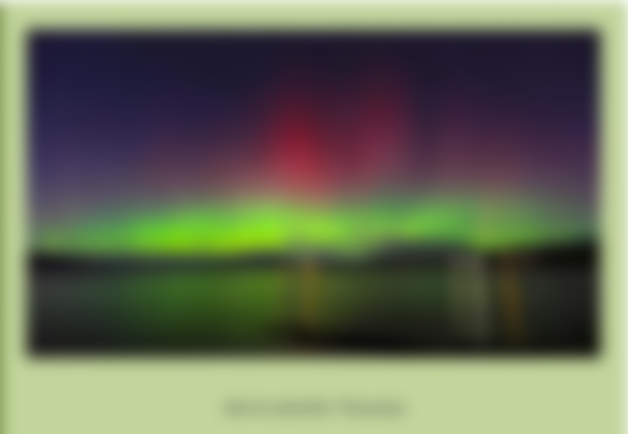Aurora borealis is an exceptional natural phenomenon that most often occurs near the Earth's magnetic poles and is manifested in the form of nebulous rays of light of various colors (mostly green, purple or reddish). It appears in the form of bows, ribbons or curtains in the sky, but it can also take fascinating shapes. It occurs suddenly and quickly and often disappears after a few minutes. This natural phenomenon, which can mainly be seen north of 60 degrees north latitude and south of 60 degrees south latitude, occurs when charged particles of the solar wind (mostly electrons, but also protons and heavy ions) hit the outer layers of the Earth's atmosphere. , causing a flash of existing air molecules. The color of light depends on the type of particle: oxygen atoms produce green light at altitudes of 100 km and red light at altitudes of 200 km; nitrogen atoms produce red light when not ionized, and light blue when they are ionized.

The aurora borealis that occurs in the northern hemisphere is called the aurora borealis, and the light that occurs in the southern aurora australis. Both auroras are of the same origin and originate in the same way, and can be as copied in relation to each other.
In addition to the atmosphere, the Earth is surrounded by belts of charged particles, the so-called. Van Allen belts, which stretch from 3840 km to 16000 km above the Earth's surface. These bands are made up mainly of electrons, protons and some atomic nuclei, which originate from the Sun. Namely, it is known that the outer parts of the solar atmosphere constantly lose mass in the form of the solar wind, currents of charged particles ejected at high speed from the higher layers of the solar atmosphere. When these particles reach the vicinity of the Earth, the Earth's magnetic field begins to act on them, trapping them in its atmosphere. These particles have since been forced to oscillate constantly between the north and south magnetic poles. When eruptions occur on the Sun, a larger number of charged particles reach the Earth's atmosphere, which then disrupts already existing particles. Then some charged particles, following the lines of the magnetic field, are directed towards the magnetic poles. They then move in an accelerated spiral around the lines of the magnetic field, as a result of which they emit light, which represents polar light. In periods of increased solar activity, the intensity of aurora borealis is also increased, so in such cases, this natural phenomenon can be seen even at lower latitudes.



I have a friend who lives in Norway, Finnland. She always takes pictures of its wonder. It is teally stunning. Thanks for sharing it.